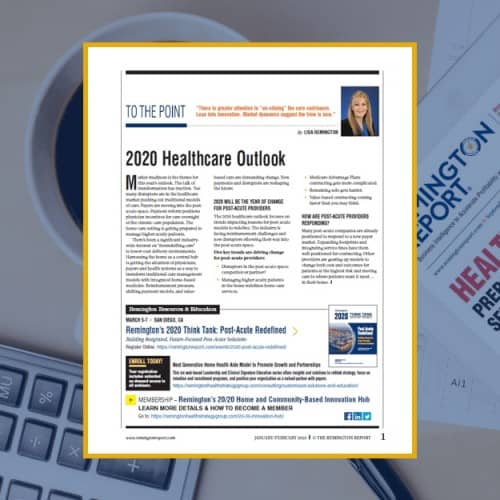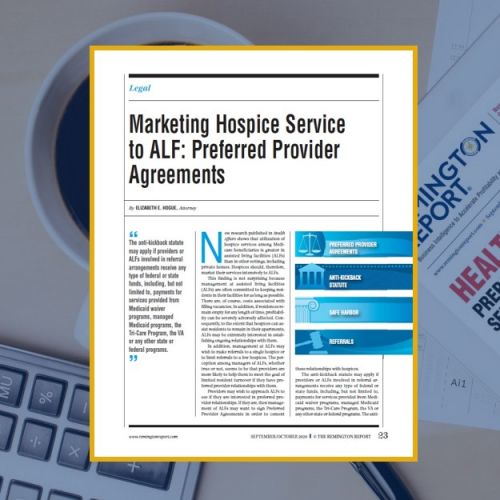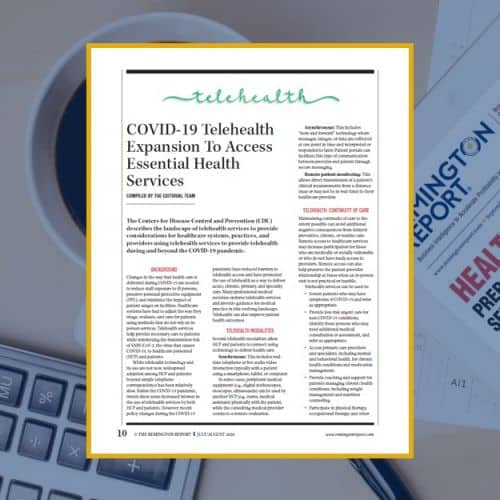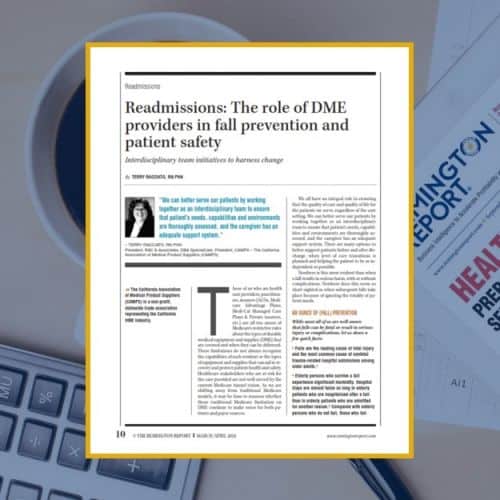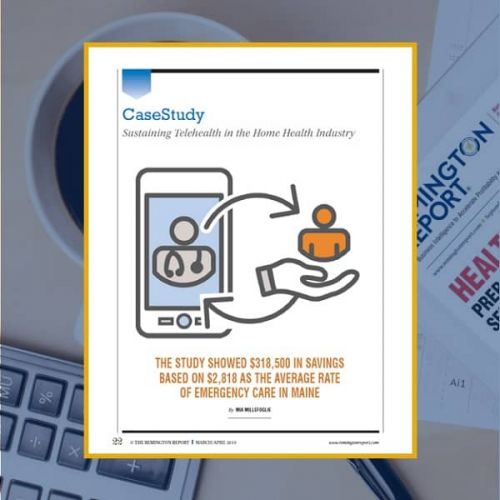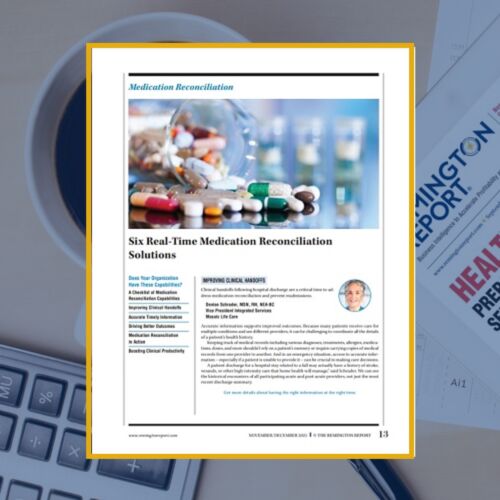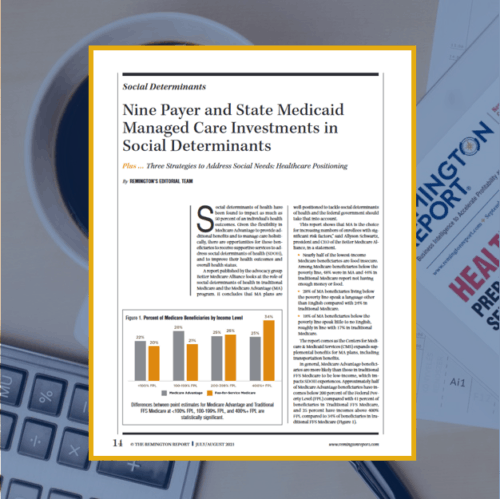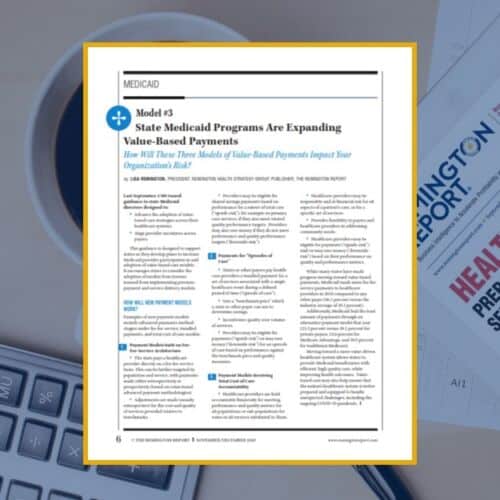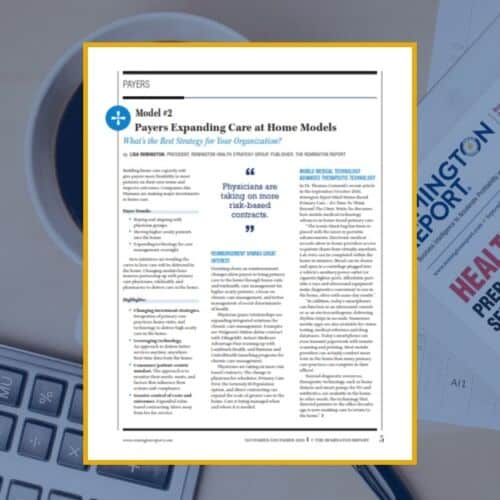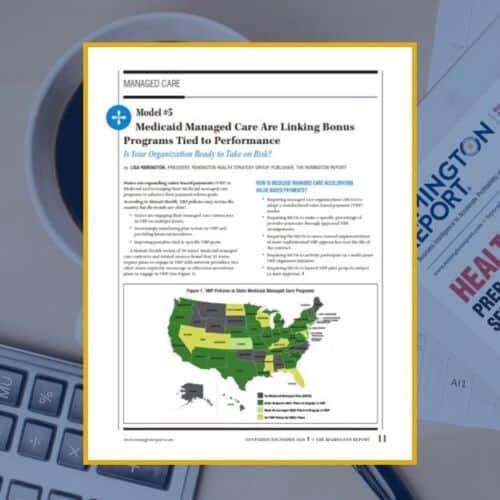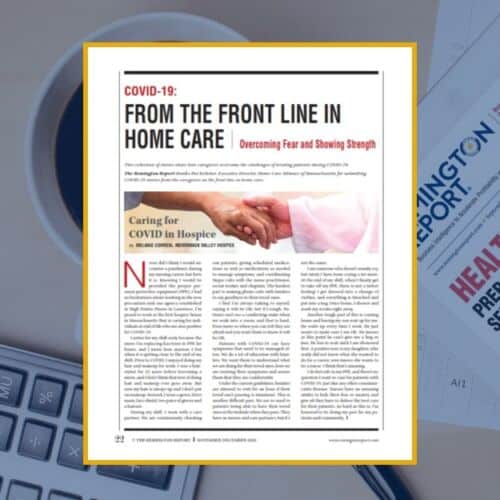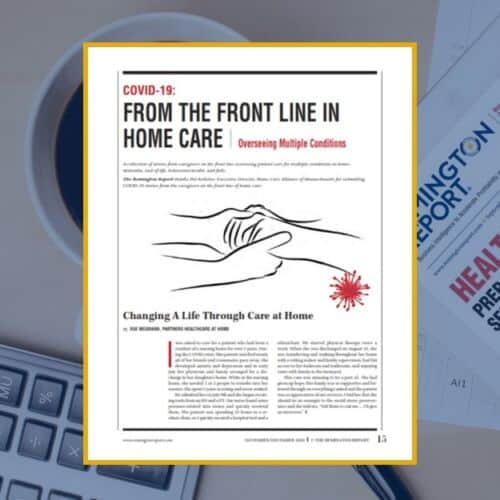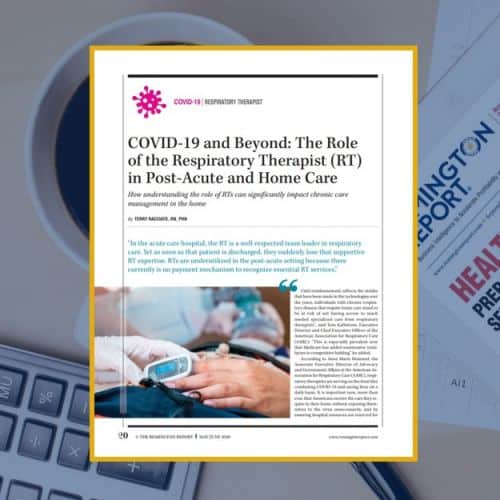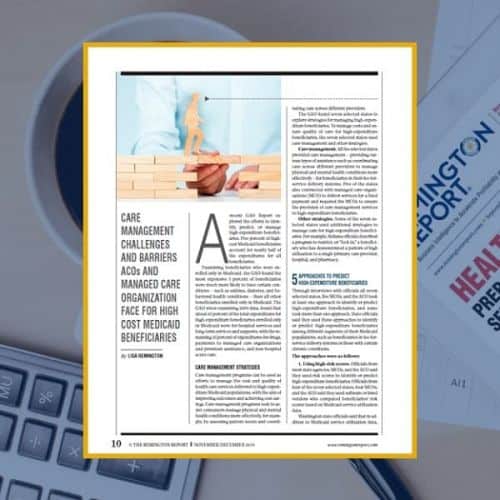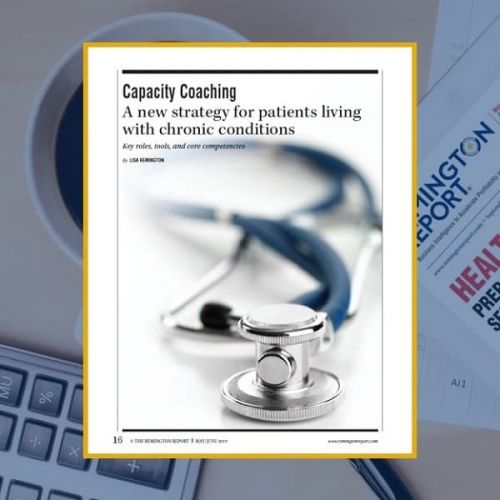-
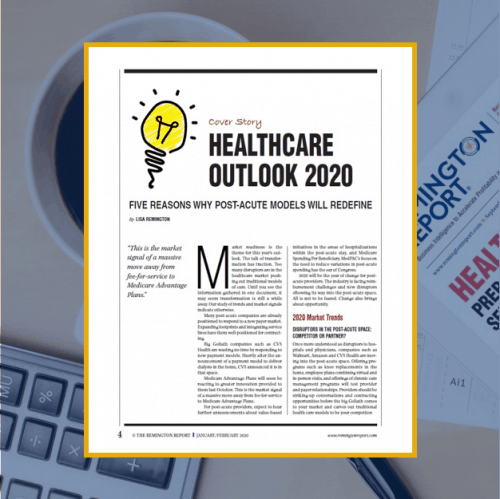 Market readiness is the theme for this year?s outlook. The talk of transformation has traction. Too many disruptors are in the healthcare market pushing out traditional models of care. Until you see the information gathered in one document, it may seem transformation is still a while away. Our study of trends and market signals indicate otherwise. This article is free to 1-Year Classic and 2-Year Premium subscribers.
Market readiness is the theme for this year?s outlook. The talk of transformation has traction. Too many disruptors are in the healthcare market pushing out traditional models of care. Until you see the information gathered in one document, it may seem transformation is still a while away. Our study of trends and market signals indicate otherwise. This article is free to 1-Year Classic and 2-Year Premium subscribers. -
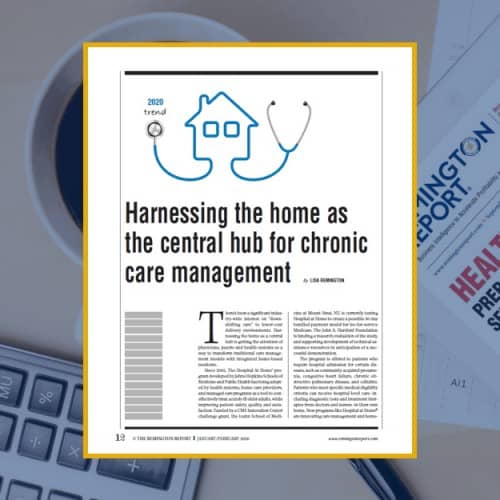 There?s been a significant industry-wide interest on ?downshifting care? to lower-cost delivery? environments. Harnessing the home as a?central hub is getting the attention of physicians, payers and health systems as a way to transform traditional care management models with integrated home-based medicine. This article is free to 1-Year Classic and 2-Year Premium subscribers.
There?s been a significant industry-wide interest on ?downshifting care? to lower-cost delivery? environments. Harnessing the home as a?central hub is getting the attention of physicians, payers and health systems as a way to transform traditional care management models with integrated home-based medicine. This article is free to 1-Year Classic and 2-Year Premium subscribers. -
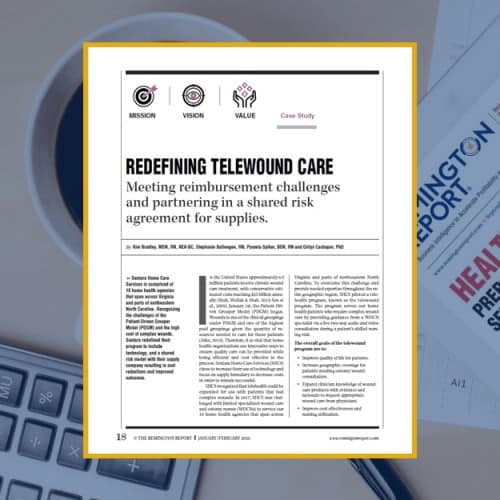 Sentara Home Care Services is comprised of 10 home health agencies that span across Virginia and parts of northeastern North Carolina. Recognizing the challenges of the Patient-Driven Grouper Model (PDGM) and the high cost of complex wounds, Sentara redefined its program to include technology, and a shared risk model with their supply company resulting in cost reductions and improved outcomes. This article is free to 1-Year Classic and 2-Year Premium subscribers.
Sentara Home Care Services is comprised of 10 home health agencies that span across Virginia and parts of northeastern North Carolina. Recognizing the challenges of the Patient-Driven Grouper Model (PDGM) and the high cost of complex wounds, Sentara redefined its program to include technology, and a shared risk model with their supply company resulting in cost reductions and improved outcomes. This article is free to 1-Year Classic and 2-Year Premium subscribers. -
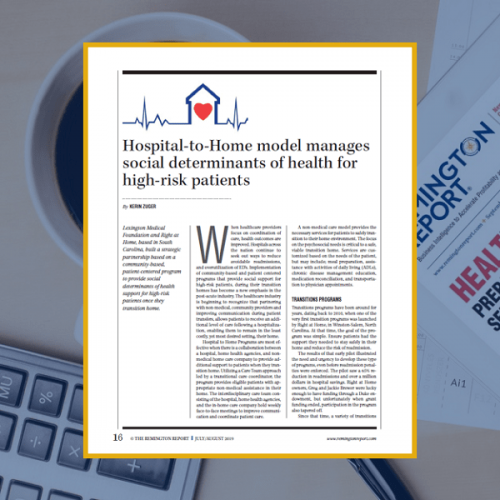 Lexington Medical Foundation and Right at Home, based in South Carolina, built a strategic partnership based on a community-based, patient-centered program to provide social determinants of health support for high-risk patients once they transition home. This article is free to 1-Year Classic and 2-Year Premium subscribers.
Lexington Medical Foundation and Right at Home, based in South Carolina, built a strategic partnership based on a community-based, patient-centered program to provide social determinants of health support for high-risk patients once they transition home. This article is free to 1-Year Classic and 2-Year Premium subscribers. -
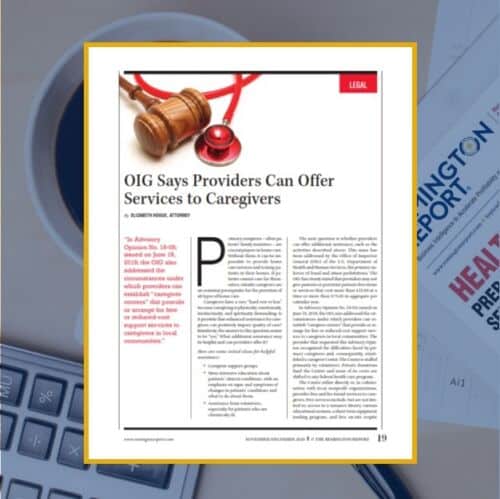 In Advisory Opinion No. 18-05; issued on June 18, 2018; the OIG addressed the circumstances under which providers can establish ?caregiver centers? that provide or arrange for free or reduced-cost support services to caregivers in local communities. This article is free to 1-Year Classic and 2-Year Premium subscribers.
In Advisory Opinion No. 18-05; issued on June 18, 2018; the OIG addressed the circumstances under which providers can establish ?caregiver centers? that provide or arrange for free or reduced-cost support services to caregivers in local communities. This article is free to 1-Year Classic and 2-Year Premium subscribers. -
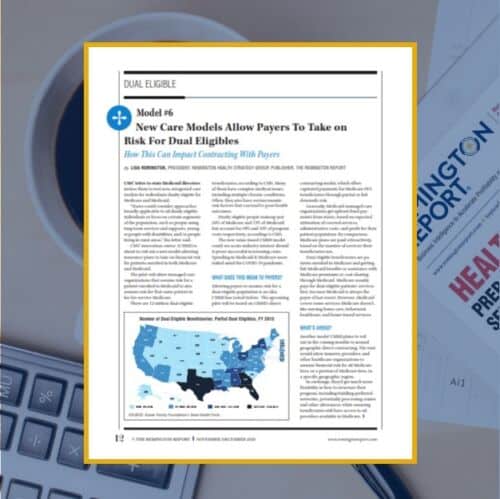 CMS' innovation center (CMMI) is about to roll out a new model allowing insurance plans to take on financial risk for patients enrolled in both Medicare and Medicaid. How will this affect payers? What other new models can you expect in the future? This article is free to 1-Year Classic and 2-Year Premium subscribers.
CMS' innovation center (CMMI) is about to roll out a new model allowing insurance plans to take on financial risk for patients enrolled in both Medicare and Medicaid. How will this affect payers? What other new models can you expect in the future? This article is free to 1-Year Classic and 2-Year Premium subscribers. -
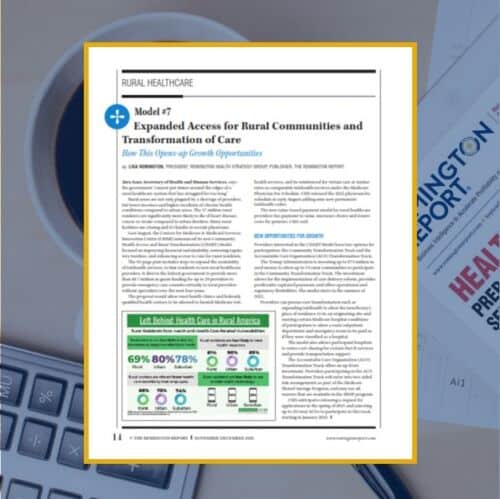 The Community Health Access and Rural Transformation (CHART) Model expands telehealth services, links residents to non-local healthcare providers, and provides more than $8.7 million in grant funding. What are the new opportunities for your organization? This article is free to 1-Year Classic and 2-Year Premium subscribers.
The Community Health Access and Rural Transformation (CHART) Model expands telehealth services, links residents to non-local healthcare providers, and provides more than $8.7 million in grant funding. What are the new opportunities for your organization? This article is free to 1-Year Classic and 2-Year Premium subscribers. -
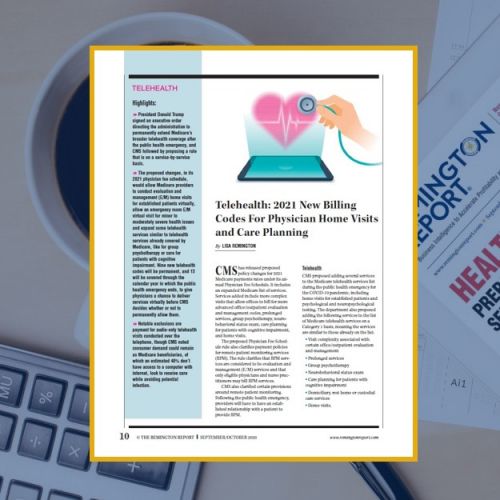 CMS has released proposed policy changes for 2021 Medicare payment rates under its annual Physician Fee Schedule. Telehealth codes allow physicians to bill for home visits and care planning. We dive into the codes and what they mean. This article is free to 1-Year Classic and 2-Year Premium subscribers.
CMS has released proposed policy changes for 2021 Medicare payment rates under its annual Physician Fee Schedule. Telehealth codes allow physicians to bill for home visits and care planning. We dive into the codes and what they mean. This article is free to 1-Year Classic and 2-Year Premium subscribers. -
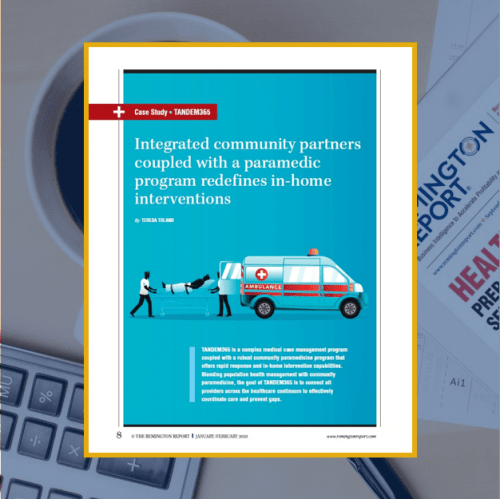 TANDEM365 is a complex medical case management program coupled with a robust community paramedicine program that offers rapid response and in-home intervention capabilities. Blending population health management with community paramedicine, the goal of TANDEM365 is to connect all providers across the healthcare continuum to effectively coordinate care and prevent gaps. This article is free to 1-Year Classic and 2-Year Premium subscribers.
TANDEM365 is a complex medical case management program coupled with a robust community paramedicine program that offers rapid response and in-home intervention capabilities. Blending population health management with community paramedicine, the goal of TANDEM365 is to connect all providers across the healthcare continuum to effectively coordinate care and prevent gaps. This article is free to 1-Year Classic and 2-Year Premium subscribers. -
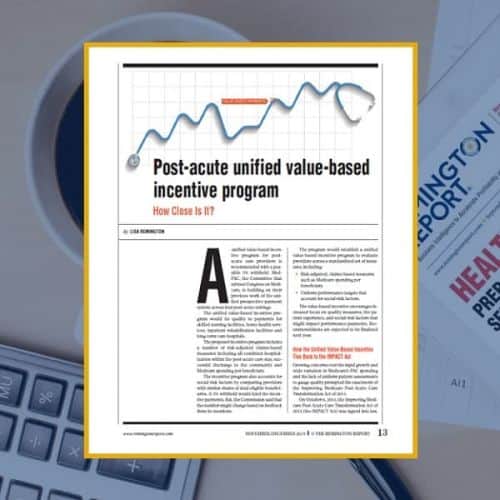 A unified value-based incentive program for post-acute care providers is recommended with a possible 5% withhold. Med-PAC is building on their previous work of the unified prospective payment system across four post-acute settings. This article is free to 1-Year Classic and 2-Year Premium subscribers.
A unified value-based incentive program for post-acute care providers is recommended with a possible 5% withhold. Med-PAC is building on their previous work of the unified prospective payment system across four post-acute settings. This article is free to 1-Year Classic and 2-Year Premium subscribers. -
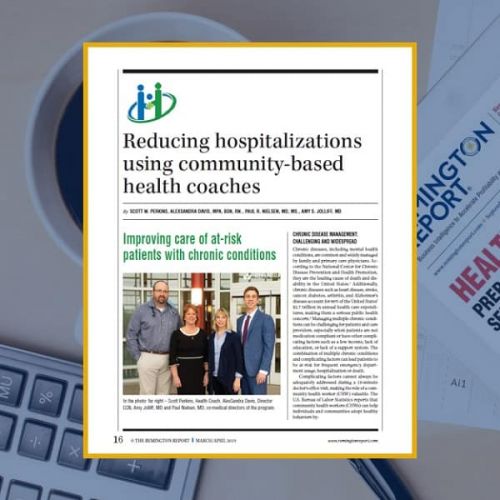 A recent study suggests health coaches could provide significant cost savings to patients and health systems, reduce patient hospitalizations and emergency department visits, improve patient health, and improve the quality of care for high-risk patient populations. This article is free to 1-Year Classic and 2-Year Premium subscribers.
A recent study suggests health coaches could provide significant cost savings to patients and health systems, reduce patient hospitalizations and emergency department visits, improve patient health, and improve the quality of care for high-risk patient populations. This article is free to 1-Year Classic and 2-Year Premium subscribers. -
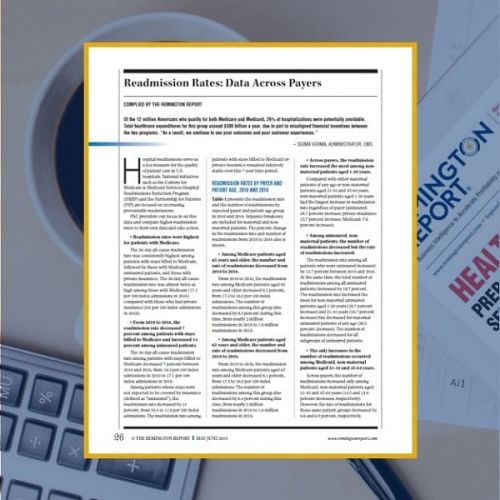 Of the 12 million Americans who qualify for both Medicare and Medicaid, 26% of hospitalizations were potentially avoidable. Total healthcare expenditures for this group exceed $300 billion a year, due in part to misaligned financial incentives between the two programs. This article is free to 1-Year Classic and 2-Year Premium subscribers.
Of the 12 million Americans who qualify for both Medicare and Medicaid, 26% of hospitalizations were potentially avoidable. Total healthcare expenditures for this group exceed $300 billion a year, due in part to misaligned financial incentives between the two programs. This article is free to 1-Year Classic and 2-Year Premium subscribers. -
 Eighty percent of ACOs reported using home visits for some of their patients, with larger ACOs more commonly using home visits. Under alternative payment models ? including accountable care organization (ACO) contracts ? providers may have greater motivation to improve care delivery for patients with complex clinical needs because they are responsible for the patients? total cost of care. This article is free to 1-Year Classic and 2-Year Premium subscribers.
Eighty percent of ACOs reported using home visits for some of their patients, with larger ACOs more commonly using home visits. Under alternative payment models ? including accountable care organization (ACO) contracts ? providers may have greater motivation to improve care delivery for patients with complex clinical needs because they are responsible for the patients? total cost of care. This article is free to 1-Year Classic and 2-Year Premium subscribers. -
 Telehealth is predicted to be the next big investment for seniors aging in place. The number of seniors requiring additional caregiving and support due to chronic disease will increase from about 14 percent of the senior population in 2010 to 21 percent by 2050, putting the pressure on healthcare providers to improve caregiving platforms. This article is free to 1-Year Classic and 2-Year Premium subscribers.
Telehealth is predicted to be the next big investment for seniors aging in place. The number of seniors requiring additional caregiving and support due to chronic disease will increase from about 14 percent of the senior population in 2010 to 21 percent by 2050, putting the pressure on healthcare providers to improve caregiving platforms. This article is free to 1-Year Classic and 2-Year Premium subscribers. -
 The Centers for Medicare & Medicaid Innovation (CMMI) recently announced five new payment models transforming?kidney care so that patients?with chronic kidney disease have access to high quality, coordinated care. The payment models are in response to an executive order signed by President Trump on advancing kidney health. This article is free to 1-Year Classic and 2-Year Premium subscribers.
The Centers for Medicare & Medicaid Innovation (CMMI) recently announced five new payment models transforming?kidney care so that patients?with chronic kidney disease have access to high quality, coordinated care. The payment models are in response to an executive order signed by President Trump on advancing kidney health. This article is free to 1-Year Classic and 2-Year Premium subscribers. -
 About two-thirds of hospital readmission costs were higher than their initial admission costs for common diagnoses in 2016, according to a Healthcare Cost and Utilization Project Statistical Brief released by the Agency for Healthcare Research and Quality. This article is free to 1-Year Classic and 2-Year Premium subscribers.
About two-thirds of hospital readmission costs were higher than their initial admission costs for common diagnoses in 2016, according to a Healthcare Cost and Utilization Project Statistical Brief released by the Agency for Healthcare Research and Quality. This article is free to 1-Year Classic and 2-Year Premium subscribers. -
 Adam Boehler left his position as the deputy administrator and director of CMS and Medicaid Innovation (CMMI). His position at CMMI was important to home and community-based providers. His work created models to pay primary care physicians based on value, tie prices of drugs administered in a doctor's office to the amount other countries pay, and a drive to move?more people to get dialysis in their homes. This article is free to 1-Year Classic and 2-Year Premium subscribers.
Adam Boehler left his position as the deputy administrator and director of CMS and Medicaid Innovation (CMMI). His position at CMMI was important to home and community-based providers. His work created models to pay primary care physicians based on value, tie prices of drugs administered in a doctor's office to the amount other countries pay, and a drive to move?more people to get dialysis in their homes. This article is free to 1-Year Classic and 2-Year Premium subscribers.
